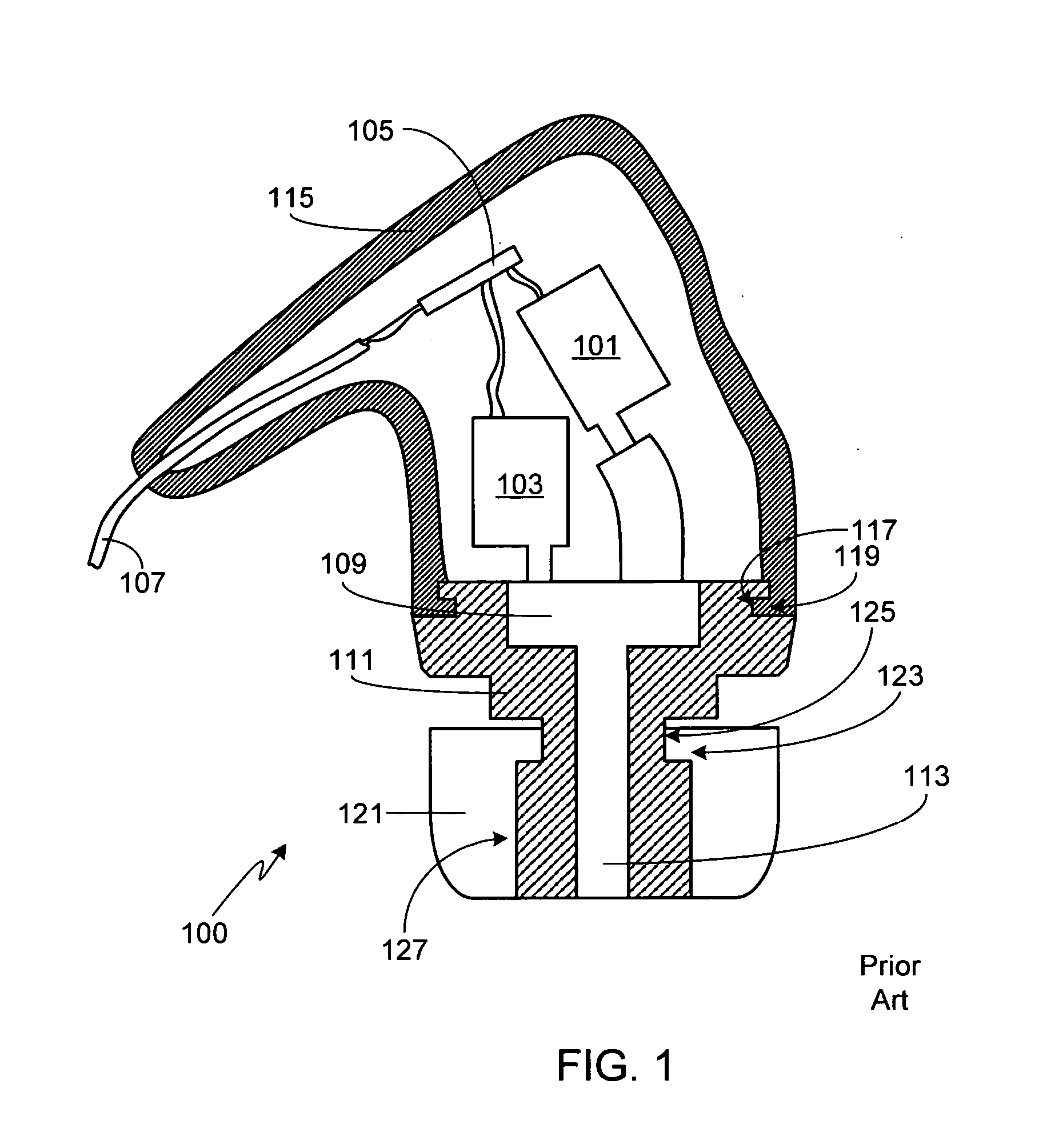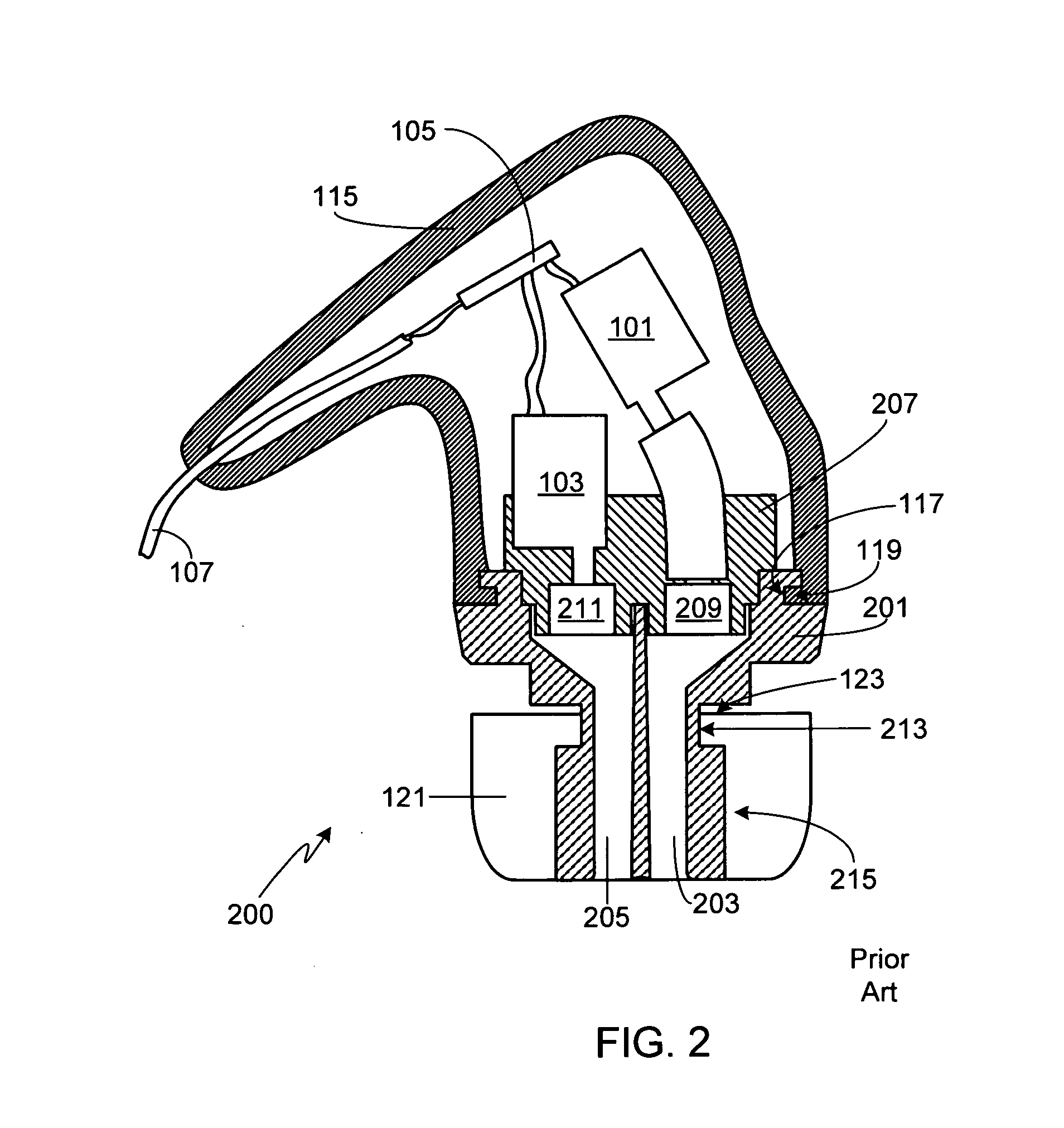Earphone ambient eartip
a technology of ambient eartips and eartips, which is applied in the field of eartips, can solve the problems of inability to provide high-fidelity performance across all frequencies, the cost of armature receivers, and the fact that they are typically only found, so as to reduce the base response of the earphones and limit the sound isolation of the eartips
- Summary
- Abstract
- Description
- Claims
- Application Information
AI Technical Summary
Benefits of technology
Problems solved by technology
Method used
Image
Examples
Embodiment Construction
[0021]FIG. 1 is a cross-sectional view of a generic earphone 100 in accordance with the prior art. Earphone 100, also referred to herein as an earpiece, in-ear monitor and canalphone, includes a low-frequency driver armature driver 101 and a high-frequency armature driver 103. A circuit 105, such as a passive crossover circuit or an active crossover circuit, provides input to armature drivers 101 and 103. Crossover circuit 105 is coupled to the external sound source (not shown) via a cable 107. Only a portion of cable 107 is shown. The external sound source may be selected from any of a variety of sources such as an audio receiver, mixer, music player, headphone amplifier or other source type. As is well known in the industry, earphone 100 can also be wirelessly coupled to the desired source. Although dual armature drivers are shown in FIG. 1, it will be appreciated that the invention is equally applicable to other driver configurations, for example with fewer or greater numbers of ...
PUM
 Login to View More
Login to View More Abstract
Description
Claims
Application Information
 Login to View More
Login to View More - R&D
- Intellectual Property
- Life Sciences
- Materials
- Tech Scout
- Unparalleled Data Quality
- Higher Quality Content
- 60% Fewer Hallucinations
Browse by: Latest US Patents, China's latest patents, Technical Efficacy Thesaurus, Application Domain, Technology Topic, Popular Technical Reports.
© 2025 PatSnap. All rights reserved.Legal|Privacy policy|Modern Slavery Act Transparency Statement|Sitemap|About US| Contact US: help@patsnap.com



